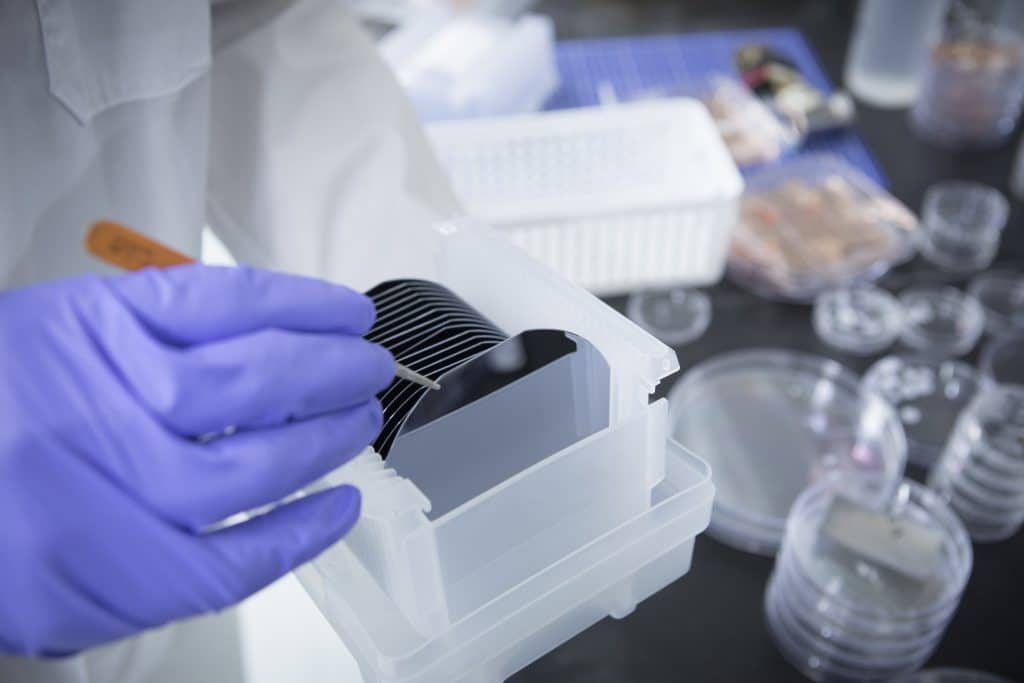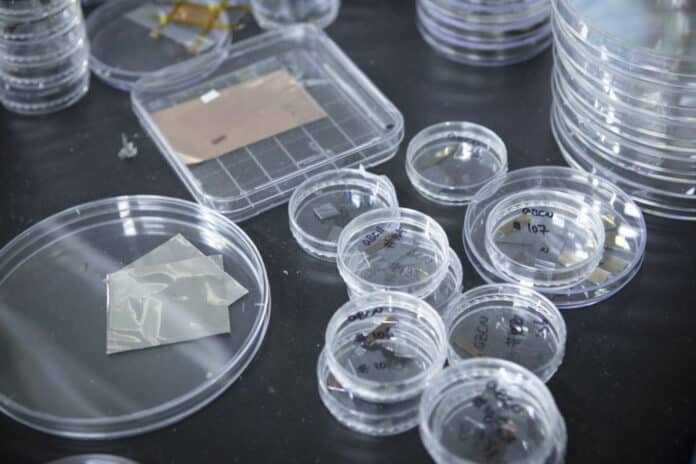Microdevices should be thinner and smaller to fit more in one chip to improve semiconductor performance. However, silicon made of 3D materials has a critical flaw that reduces the semiconductor’s performance and lifespan. This flaw is known as the short channel effect and charge dispersion, and as a transistor gets smaller, it damages itself owing to current leakage and heating.
The challenge to increase the micro-device integration density that determines semiconductor performance is ongoing. For the first time globally, Professor Hyunseok Shin of the Department of Chemistry has created a technology that makes it possible to create multiple layers of hexagonal boron nitride, the only 2D insulator, as a single crystal thin film, paving the way for the development of next-generation semiconductors.
A particular type of 2D insulator discovered so far, hexagonal boron nitride (hBN), can stop semiconductor functional degradation issues such as charge trapping and charge scattering. Although it has a white tint and is hence also known as “white graphene,” it has a molecular structure comparable to that of graphene.
Using hBN as a 2D insulator should be synthesized into a single crystal structure where the entire crystal is regularly generated along a certain crystalline axis. Previously, there were cases of synthesis of a single crystal of hBN of which size can be commercialized. However, the thickness of all synthesis was a layer of an atom, which could not function as an insulator.
The team led by Professor Hyuseok Shin at the Department of Chemistry created a revolutionary method for synthesizing hBN that allows for the stacking of single crystal hBN thin films in several layers. It is the first synthesis method in the world that can produce a single crystal hBN thin film at a desired thickness while precisely controlling the raw material concentration on the nickel substrate.

The development of single crystal multilayer hBN thin film has conducted a study on the synthesis and application of hBN since 2012. Scientists reported this study result in the magazine Nature in 2020 and revealed that amorphous boron nitride, a type of boron nitride, is an ultralow dielectric material that prevents the signal transmission delay in high-density semiconductors.
Professor Hyunseok Shin said, “Amorphous boron nitride was discovered in 2018 when I studied hBN. Its dielectric constant was very low at 2.0 or lower, so I found it could be used as a dielectric that blocked electrical interference when semiconductors were miniaturized during my research of two years. Since then, many semiconductor companies have conducted research and development on the commercialization of amorphous boron nitride. We expect that the synthesis method of single crystal multilayer hBN thin film will play a significant role in improving semiconductor technology.”
“We successfully synthesized single crystal hBN thin film at multiple layers, but we still need one more technology to be developed for commercialization. That is a technology that transfers an hBN thin film synthesized on a nickel substrate onto a wafer without damage.”
Professor Shin added, “Once this technology is developed, it can be used to transfer not only hBN thin films but also various 2D materials. Professor Shin’s team plans to widen its research on application chemical areas using hBN in addition to the foundational research related to hBN. We hope their efforts will lead to the innovation of semiconductors.”
The study is published in the global academic journal Nature.
